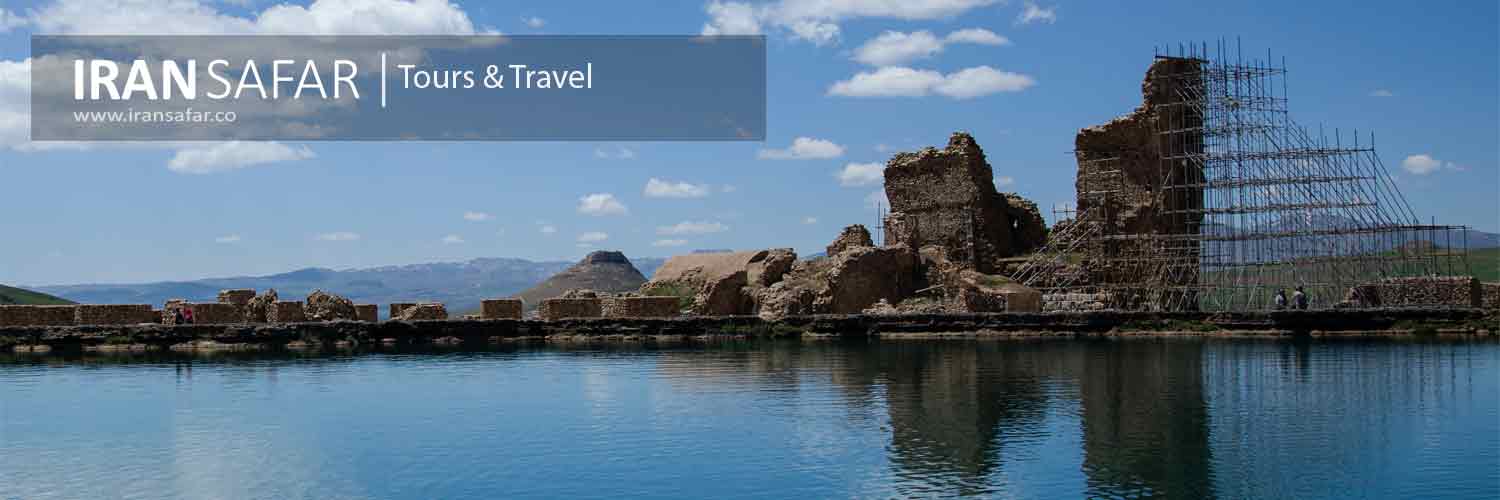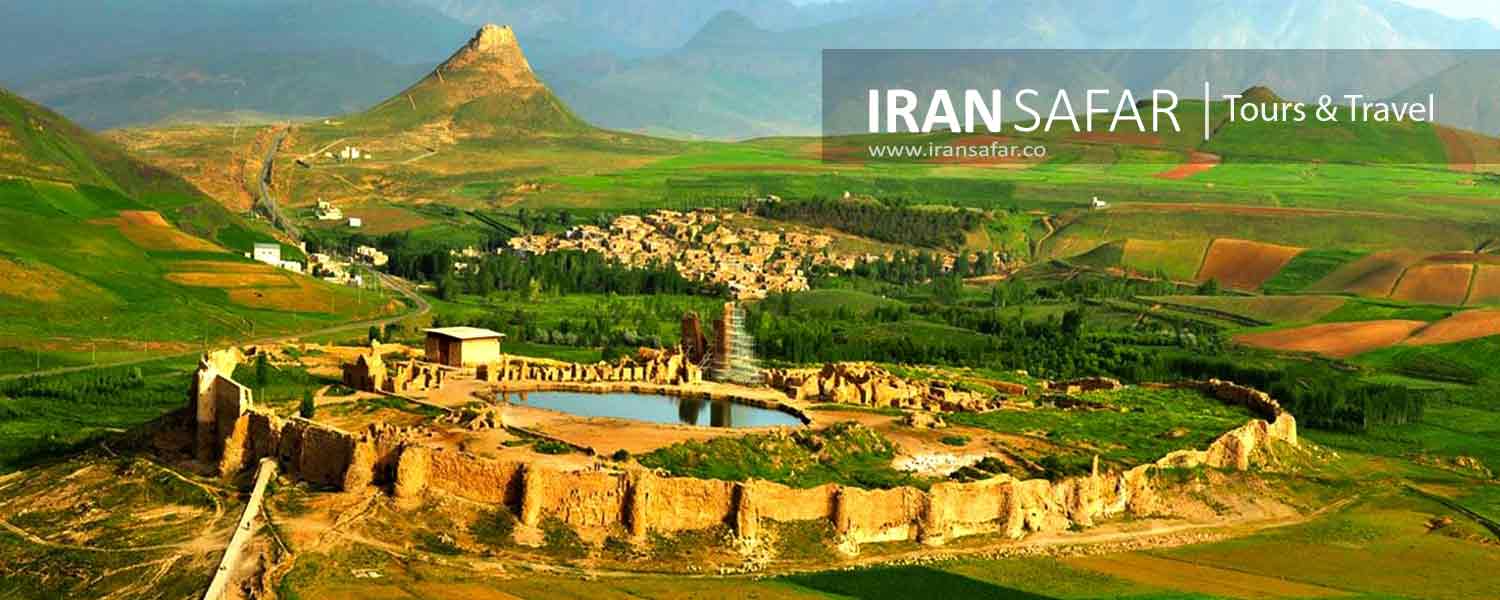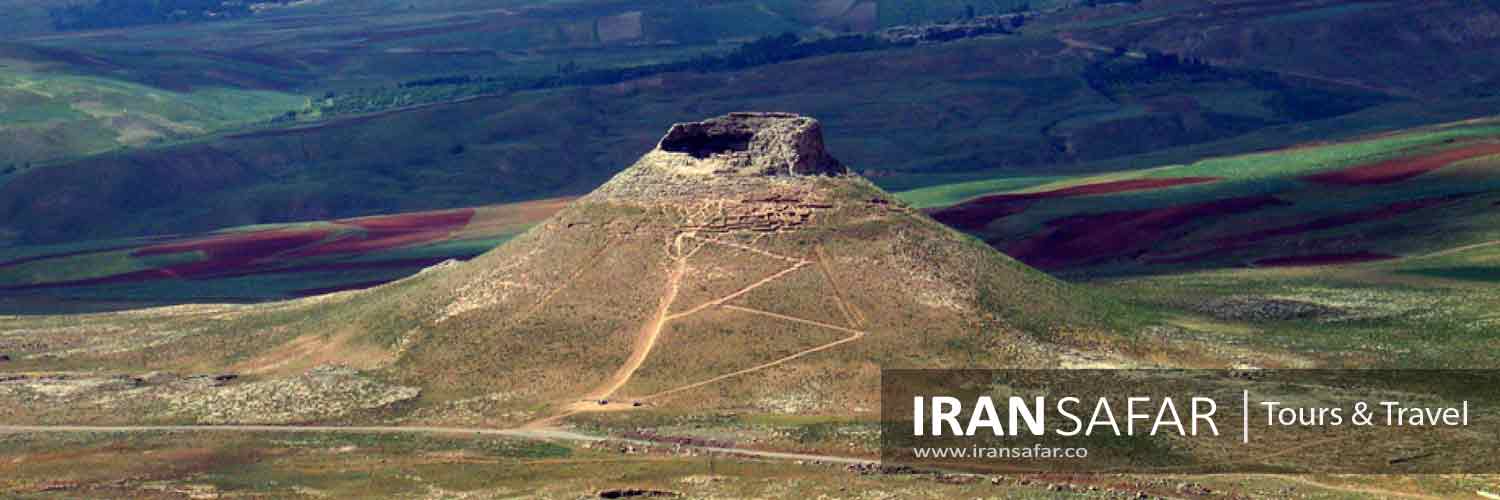Takht-e Soleyman or Azargoshnasb fire temple is an outstanding complex of royal architecture from Sasanian and Ilkhan eras which represents an outstanding example of a Zoroastrian sanctuary. The composition and the architectural elements created by the Sassanians there have exerted a strong influence not only in the development of religious architecture in the Islamic period, but also in other cultures and regions.

Takht-e soleyman, Takab, Iran
The site consists of an oval platform about 350 m by 550 m rising 60 m above the surrounding valley which has a small calcareous artesian well that has formed a lake some 120 m deep. From here, small streams bring water to surrounding lands.
The Unesco -listed Takht-e Soleyman ruins were the spiritual center for Zoroastrianism during Sassanians with a fire temple in which fire was provided thanks to a natural volcanic gas channeled through ceramic pipes to sustain an ‘eternal flame’.
During 13th century Takht-e Soleyman became a summer retreat for the Mongol Ilkhanid khans. The remnants of their hunting palace are now covered with a discordant modern roof forming a storeroom for amphorae, unlabeled column fragments, photos and a couple of ceramic sections of those ancient gas pipes.
The main parts of the sanctuary are distinguished by cut blocks of stone and well-baked bricks. The exterior mud brick wall was coated by a rough-stone wall with a facing of large stone slabs, imitating stretching and heading bond. The northern stone gate, built exactly on the place of the older one and badly damaged now, was obviously identical with the well-preserved southern gate with its gallery of blind windows above and its lateral semicircular bastions, The lower part of the gate is covered with debris, only the upper part, that is less than half of the gate height, being visible today. The wall had an uncovered passage with parapet and stepped crenellations, tower chambers above the massive bastions, and connecting vertical shafts down to the gate-house, probably for interlunation. The inner brick wall was replaced by a stone wall with interior vaulted corridor and semicircular bastions outside.

The lake is an integral part of the composition and was surrounded by a rectangular ‘fence’. In the north-west corner of this once fenced area, there is the so-called Western iwan , ‘Khosrow gallery’, built as a massive brick vault, characteristic of Sassanian architecture. The surfaces were rendered in lime plaster with decorative features in muqarnas (stalactite ceiling decoration) and stucco. The site was destroyed at the end of the Sassanian period, and left to decay. It was revived in the 13th century under the Mongol occupation, and some parts were rebuilt, such as the Zoroastrian fire temple and the Western iwan . New constructions were built around the lake, including two octagonal towers behind the iwan decorated in glazed tiles and ceramics. A new entrance was opened through the main walls, in the southern axis of the complex. It is noted that the surrounding lands in the valley (included in the buffer zone) contain the remains of the Sassanian town, which has not been excavated. A brick kiln dating from the Mongol period has been found 600 m south of Takht-e Soleyman. The mountain to the east was used by the Sassanians as a quarry for building stone.
 Zendan-e Soleyman
Zendan-e Soleyman
Zandan-e Soleyman or Solomon’s Prison, is a hollow, conical mountain, almost 3 Km to the west of Takht-e Soleyman, rising about 100 m above the surrounding land, and contains an 80 m deep hole, about 65 m in diameter, formerly filled with water, this geological structure; remnants of a dried karstic spring. currently there are some similar active hot springs not very far from the site. Around the top of the mountain there are remains of a series of shrines and temples that have been dated to the 1st millennium BCE.
Zendān-e Soleymān was apparently a site of worship prior to the removal of observances to the larger mound complex. It is not clear when, precisely, the site was abandoned. Like Takht-e Soleymān, this mountain complex takes its name from the biblical king.



Comment (0)